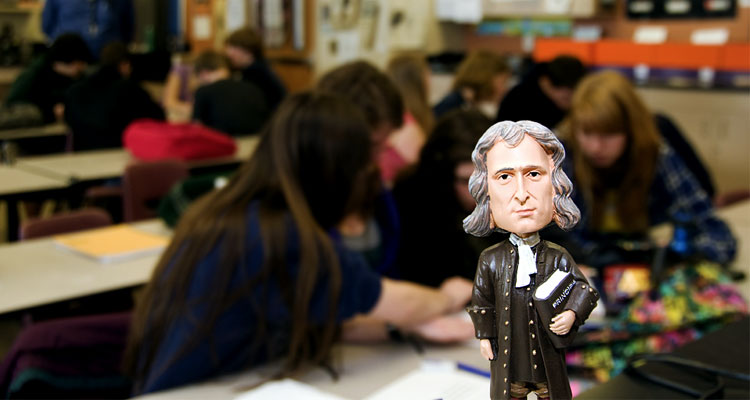The scientific community just celebrated a very notable birthday. Sir Isaac Newton was born January 4, 1643 in England.
Though he certainly wouldn’t know it at the time, Newton would eventually publish one of, if not the, most important scientific books in history. Newton’s Principia, as it is often referred, laid the foundation for classical mechanics and mathematics among other scientific fields of study.
Newton also shares credit for the creation of calculus. So, when you return to class this semester and you are taking physics or calculus you will know who to blame. Or, rather, who to thank. Keep in mind Newton was only eighteen when he began creating the framework of the courses you now study.
To keep things further in perspective, the black plague was ripping its way across Europe. So getting out-and-about was certainly no walk in the park.
Physics and calculus are, in my opinion, the most beautifully complex and yet simple areas of study that have ever been created. In philosophy one might argue that calculus and physics were always acting around us and it took some very ingenious people to define their characteristics, but never-the-less, Newton’s hand is connected to modern technology due to his discoveries.
For some, calculus is their job and they use it everyday, and it’s not just mathematicians. For instance, calculus allows one to calculate the area of any shape. Not only that but calculus allows a designer to maintain a certain area over a multitude of shapes and for this reason calculus is used in architecture modeling systems, Greg Lynn explains in this Ted Talk video about architecture’s roots in mathematics. Meaning, if you wanted the same relative area for a floor plan in an apartment building but wanted variations in the shape of those floor plans, calculus could help you design the different floor plans but maintain the same area, throughout the whole building, many times over.
Why does calculus allow us to do this you might ask? Well, very simply calculus is a technology that defines the change in systems that have a function.
For instance if you wanted to calculate the average air speed, velocity and cruising altitude of an aircraft you would use calculus-based equations to figure those numbers out. In fact you would have to use a dynamic equation like calculus because the variables would constantly change in an aircraft.
The earth’s surface certainly is not one standard height and air conditions vary greatly over the course of a few seconds. Especially when you are cruising an average speed of over three hundred miles per hour.
Calculus got its name from the Latin word for Pebble because small stones were once used as the system for counting. It was a system that used very small things to count large quantities of other things.
When it comes to physics and calculus there are no more interesting discoveries than have been made at the very small, quantum, and very large, universal, scales due to their application. One last example of using calculus and physics (one of my favorites at least) is when astronomers managed to determine the orbit of our Milky Way galaxy, around the center of mass of the Local Cluster, which is moving through the universe due to the inflation of the universe.
If physics and calculus have taught me anything, it is most certainly perspective.
A version of this article originally appeared on K12’s ThinkTank.
Image Credit – Oregon Department of Transportation / CC by 2.0





































